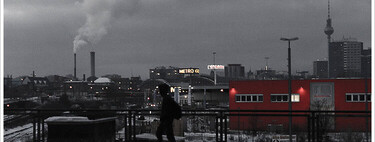Today it may sound crazy to us, but around the 18th century, London newspapers published chronicles about how you could go out, take a good walk through the city and not cross paths with anyone you knew. The English capital did not even reach 600,000 souls, but it was already on its own merits one of the great European metropolises, a dynamic place, with effervescent commerce and a “size XXL” that surprised newcomers and, most importantly, in which a concept began to forge that we are now more than familiar with: anonymity.
If any of those journalists from Händel’s London visited Dhaka, the capital of Bangladesh today, they would probably be speechless. In the South Asian metropolis it is no longer easy to go for a walk and find absolutely no one to say hello to; It is directly probable that if you move around your neighborhood there, a few meters from where you live, you will not recognize a single face.
Why?
Lots of people… and pollution
Well, because, on average, in each square kilometer of the megacity there are 36,900 people, more or less the same ones that live in the entire municipality of Oleiros, in A Coruña; or in Tudela, Navarre. That’s at least the yearbook estimate Demography World Urban Areas, which places the urban area of Dhaka as the one with the highest population density on the planet, well ahead of the second, Kinshasa (Democratic Republic of the Congo), with 33,200 inhabitants per km2. As a reference, in London they barely exceed 6,000 and in New York the average is 1,700.
Does that mean that the capital of Bangladesh is the most populous city on the globe? No. It’s just that their neighbors are the ones who live most closely together. The palm in terms of census is taken, as it has been for a long time, by Tokyo, with an urban area of 39.1 million people, many of them residents of the city itself. In second and third place would be the conurbations of Jakarta and Delhi.
Dhaka’s peculiarity is largely explained by its size and population size. According to the data handled by Demographia, the urban area of the capital of Bangladesh is home to some 16.8 million people and covers an area of 456 square kilometers. In terms of census, the Bangladeshi metropolitan area is actually the 17th most populous, behind Bangkok, Moscow or Kolkata. If you look only at size, Dhaka is by far one of the smallest. Among the 50 major urban areas analyzed in the study, there is only one minor one, Ahmadabad, in India. The Dhaka area is in fact around 18 times smaller than Tokyo.
Despite its small “urban footprint”, the report notes that the Bangladeshi capital has undergone “considerable peripheral development” over the past few years. So much so that before its population density was significantly higher and far exceeded 40,000 residents per square kilometer. The report prepared in 2012 even warned that there were neighborhoods in marginal areas in which the concentration was much higher. Another handicap of its enormous register is that, when calculating the average income, the result is very low, which makes it – they stand out – one of the “least economically productive” urban areas.
The Bangladeshi capital does not only stand out in the ranking of the most crowded cities. as collected The Daily Star has the questionable honor of being one of the most polluted cities on the planet. A few days ago the newspaper echoed the poor quality of its air, a problem that, he recalls, the Asian capital has been dealing with for a long time. “It gets unhealthy during the winter and gets better during the monsoon,” he says. Among the main sources of pollution, the kilns dedicated to making bricks, the traffic and the dust generated by the construction stand out.

Beyond its living conditions, the truth is that Dhaka plays a fundamental role in the politics and economy of its country. The metropolis centralizes the institutional life of the nation and only the city and the great region of Dhaka —points out The Statesman— account for about one-fifth of GDP and almost half of the jobs in Bangladesh. Its population weight is equally clear. A little over 160 million people reside in the country as a whole; in the urban area, 16.8.
Although the study carried out by Demographia technicians clearly indicates the capital of Bangladesh as the urban area with more than 500,000 inhabitants with the highest population density in the world, the truth is that the calculation is not easy. In his analysis he takes into account, for example, the “urban footprints”which are fixed with the urbanized extension, not the administrative limits.
Other rankings bring to first place cities that also have a considerable concentration of people, such as Malé, the capital of the Maldives. Although its census is considerably smaller than that of Dhaka, its small size also subjects it to considerable overcrowding. Other studies point to the case of Mumbai, one of the largest cities in India, where Demographia estimates that a thousand people reside for every square kilometer.
Images | MD Sifat Jahan (Unsplash) and Shafiqul Islam (Unsplash)
George is Digismak’s reported cum editor with 13 years of experience in Journalism

